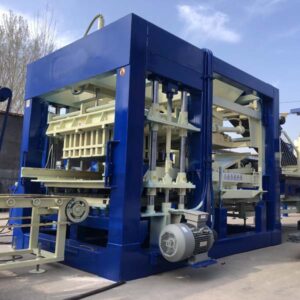
Title: **Revitalizing Cities: The Pivotal Role of Full-Automatic Blocks in Urban Redevelopment Projects**
Introduction:
Urban redevelopment projects are crucial undertakings aimed at transforming and revitalizing urban spaces to meet the evolving needs of communities. In the realm of construction materials, full-automatic blocks are emerging as key players in urban redevelopment. This article explores the multifaceted role of full-automatic blocks in the context of urban renewal, emphasizing their impact on efficiency, sustainability, and the aesthetic rejuvenation of cityscapes.
1. **Speed and Efficiency in Construction:**
One of the primary advantages of full-automatic blocks in urban redevelopment is their contribution to speed and efficiency in construction. The automated manufacturing process allows for rapid production, and the modular nature of the blocks facilitates quick assembly on-site. This accelerates construction timelines, a crucial factor in urban redevelopment projects where minimizing disruptions is paramount.
2. **Structural Integrity for Vertical Development:**
In densely populated urban areas, the need for vertical development is often a priority to maximize land use. Full-automatic blocks, engineered for structural integrity and consistency, provide a reliable foundation for constructing tall and resilient buildings. This capability is particularly beneficial in urban redevelopment projects seeking to add vertical elements to the existing cityscape.
3. **Customization for Diverse Architectural Styles:**
Urban redevelopment often involves a mix of historic and modern architecture. Full-automatic blocks, with their customizable designs, textures, and finishes, offer architects and developers the flexibility to blend diverse architectural styles seamlessly. This customization contributes to the aesthetic integration of new structures into the existing urban fabric.
4. **Sustainable Construction Practices:**
The sustainability credentials of full-automatic blocks align with the growing emphasis on eco-friendly construction in urban redevelopment. Many full-automatic blocks incorporate recycled materials, and the precision manufacturing process minimizes material waste. This commitment to sustainability resonates with urban planning goals that prioritize environmentally conscious construction practices.
5. **Noise Reduction and Thermal Insulation:**
Urban redevelopment often involves creating spaces that are not only visually appealing but also comfortable and conducive to a high quality of life. Full-automatic blocks, designed with acoustic insulation properties and thermal efficiency, contribute to noise reduction and better temperature control within buildings. This enhances the livability of urban spaces, especially in high-density areas.
6. **Flexibility in Design and Layout:**
Urban redevelopment projects require adaptability to accommodate evolving community needs. Full-automatic blocks offer flexibility in design and layout, allowing for the creation of diverse structures such as residential complexes, commercial spaces, and mixed-use developments. This adaptability enhances the functionality and longevity of urban spaces.
7. **Integration of Smart Technologies:**
The incorporation of smart technologies into full-automatic blocks further enhances their role in urban redevelopment. Blocks equipped with embedded sensors, energy-efficient systems, and connectivity contribute to the development of smart buildings and infrastructure. This integration aligns with the vision of creating technologically advanced and interconnected urban environments.
8. **Economic Viability and Cost Efficiency:**
Urban redevelopment projects often face budget constraints and must balance economic viability with the desire for revitalization. Full-automatic blocks, with their cost-efficient manufacturing processes, contribute to the economic feasibility of redevelopment initiatives. The streamlined construction timelines also help control costs and provide a sustainable solution for urban transformation.
Conclusion:
In the dynamic landscape of urban redevelopment, full-automatic blocks stand out as catalysts for positive change. Their role goes beyond structural elements; they become integral contributors to the efficiency, sustainability, and aesthetic revitalization of urban spaces. As cities continue to evolve, the adoption of full-automatic blocks in redevelopment projects signifies a commitment to innovation, adaptability, and the creation of vibrant, resilient urban environments.
